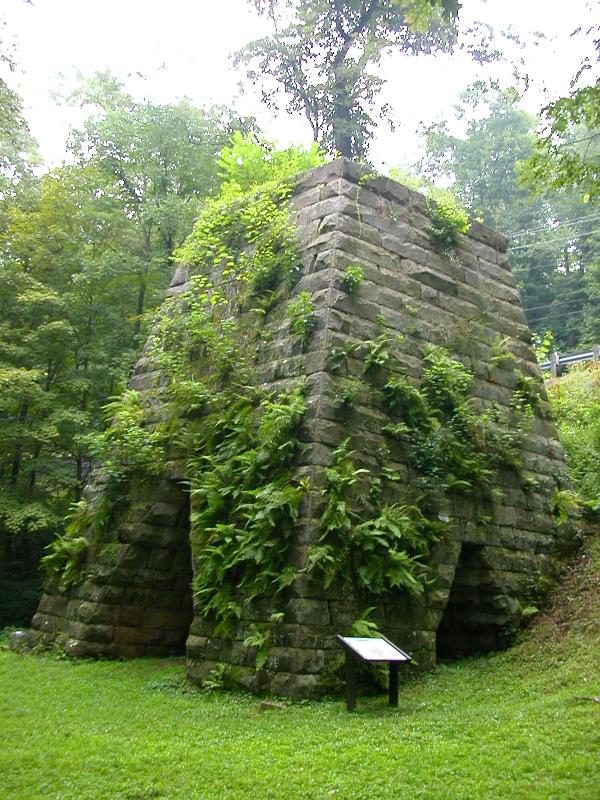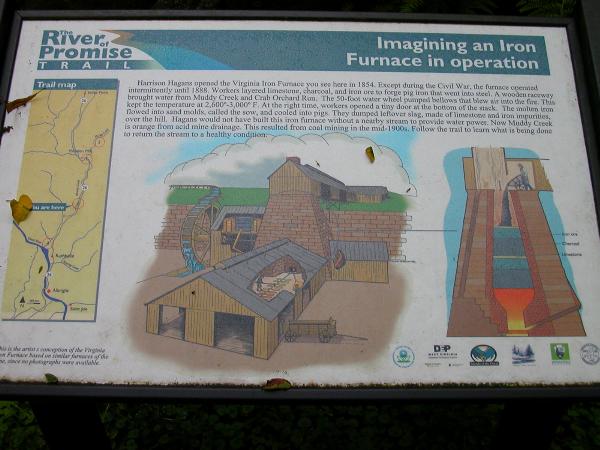Iron was almost as essential to pioneer life as was salt, the first mineral resource exploited, and was needed for a variety of agricultural and household purposes. The iron industry, therefore, developed at an early stage in West Virginia's history. Small, workable iron veins were discovered in many areas in the State, and small furnaces were set up at these spots for smelting the ore and manufacturing bar iron for the pioneer blacksmiths. In West Virginia, iron production began in 1760 at "The Bloomery," near Harpers Ferry, on the lower Shenandoah River. George Washington considered the iron produced here so superior that in 1794 he established the federal arsenal and gun factory at Harpers Ferry. At first, iron and iron products were carried west over the mountains to the pioneers. But because the journey was difficult, iron furnaces were soon established farther west.

In 1794, Peter Tarr built one of the first iron furnaces west of the Alleghenies on Kings Creek near Weirton, in Hancock County. As well as making cooking utensils and iron grates, this furnace also cast the cannonballs used by Commodore Oliver H. Perry in the 1813 Battle of Lake Erie.
Most of the iron furnaces were built in the Cheat River Valley near Ices Ferry and along Deckers Creek in the Monongahela River Valley. The Decker's Creek Iron Works, also called Rock Forge, produced bar iron as early as 1798, although the most extensive iron works were on the Cheat River. At Pleasant Furnace, built on Quarry Run about 1798, Samuel Jackson produced large quantities of bar iron and sold it in exchange for cash, grain, and country products. Since the Pleasant (Davis) Furnace was small, it did not supply enough iron for Jackson's use. So new furnaces were built, such as Woodgrove, Henry Clay, and Anna, all near Ices Ferry on the Cheat River. Since iron manufacturers preferred charcoal over coal for the furnaces, the lumber industry in the area was encouraged and thrived. During its peak years, in the 1840s, the Jackson Iron Works was a well-known establishment, employing as many as 1,200 workers. A thriving community developed with over 100 homes, four times the size of nearby Morgantown. (Complements WVGES) Short of a few foundations, there is almost no evidence of this community today.
The Josephine Furnace was built on Muddy Creek somewhere between 1847 and 1852 by Harrison Hagans and called Virginia Furnace. It was operated by George Maust, then by Lloyd and later by Landon Maust. In 1879 it was run by B. Patterson under the name of Josephine Furnace and work ceased in 1880. (West Virginia Geological Survey, Preston County Report, 1914)
